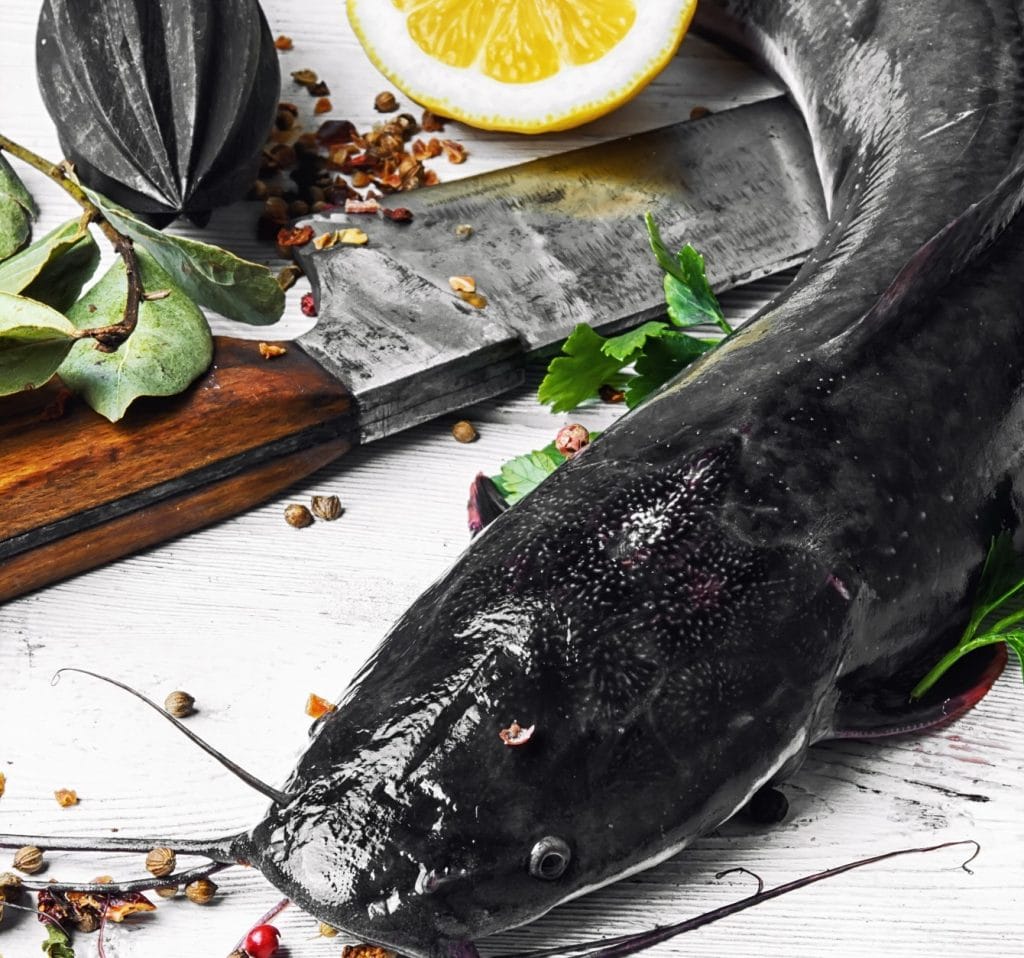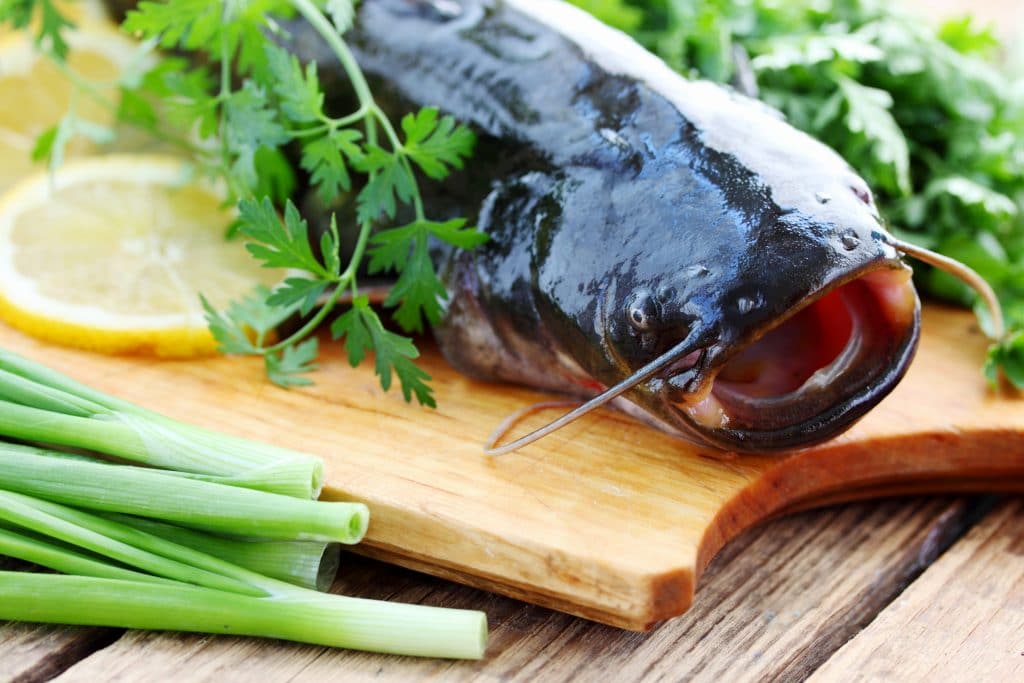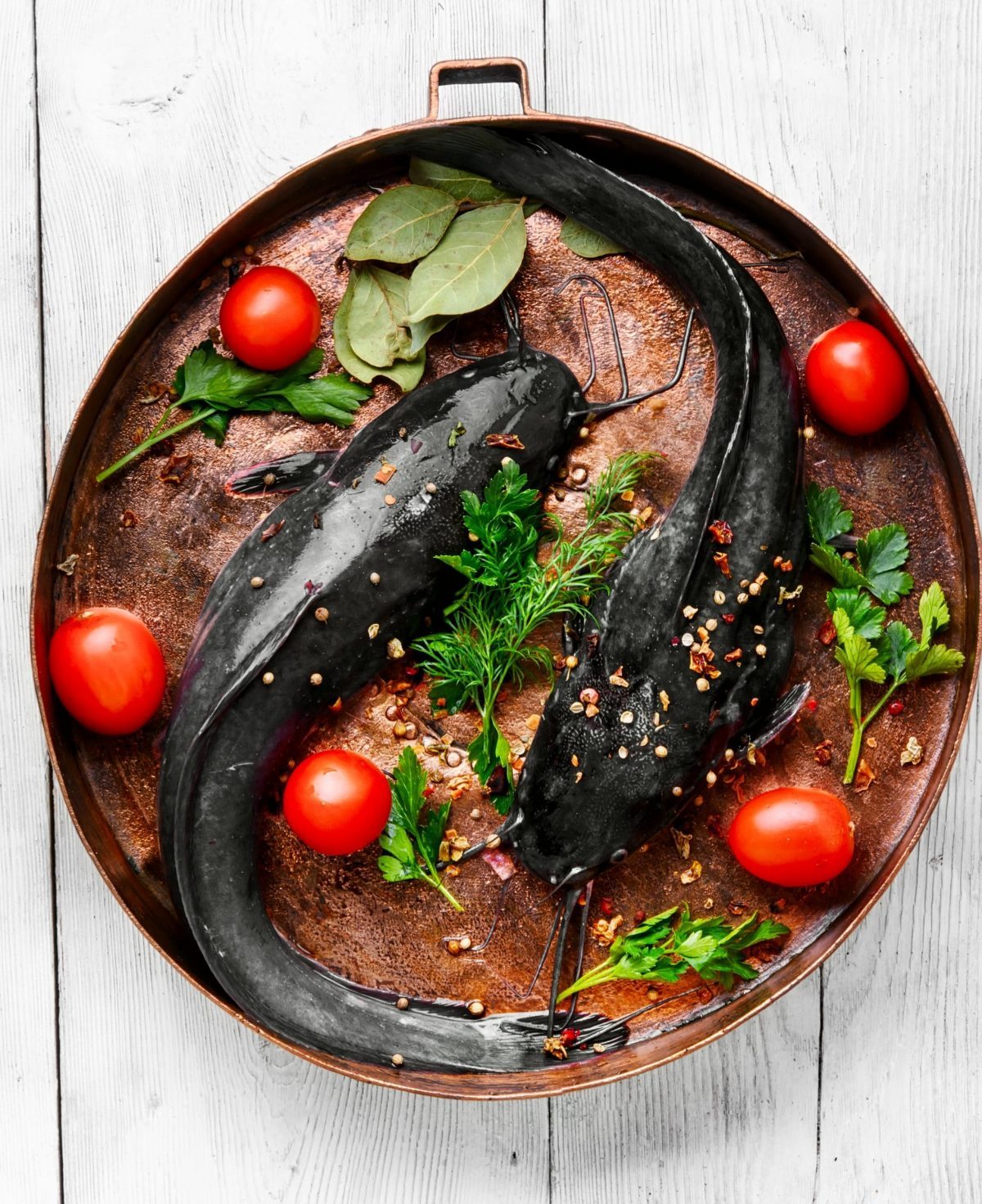What Does Catfish Taste Like?
Important Note: When you buy through our links, we may earn a commission. As an Amazon Associate we earn from qualifying purchases. Content, pricing, offers and availability are subject to change at any time - more info.
I’m always looking to expand my taste buds with different foods, and as a lover of seafood, I enjoy trying new fish. I was slightly taken aback by the idea of eating catfish when I heard of it. What exactly is catfish, and what does it taste like?
Catfish has a slightly sweet, mild flavor with a dense, moist texture, less flaky than other white fish once cooked. Wild-caught catfish has a dirty muddy taste from their stomach. The fish absorbs the seasonings and is usually coated with cornmeal, allowing you to enjoy the combined flavors.
Depending on the type of catfish, how it has been cleaned, and how you cook it, the taste will differ slightly. The base flavor of catfish may be mild, but that is not always the taste you will get on your palette. Let us look further into the details of eating catfish.
- Types Of Catfish And Their Taste
- The Best Tasting Catfish
- Why Do Smaller Catfish Taste Better?
- How To Improve The Flavor Of Catfish
- Flavors To Pair With Catfish To Improve The Taste
- The Taste Of Cooked Catfish
- Method of Cooking the Catfish
- So, What Does Catfish Taste Like?
Types Of Catfish And Their Taste

The taste of catfish is debatable. Some genuinely enjoy the dense, watery texture, and others are disgusted at the muddy flavor.
There are 2 types of catfish — wild and farmed catfish. Each one is distinctly different from the other. The flavor is mainly dependent on the kind of catfish you eat.
If you are unsure when purchasing catfish, always ask if it was farmed or wild-caught. We will discuss each one below in detail for you to figure out what is your preferred option.
The Taste Of Wild Catfish
These are the catfish you catch in rivers and ponds. They have a muddy and high fishy taste that comes from the middle. Towards the end sides of the fish, you will get a sweeter flavor which is the typical taste of catfish.
The muddy taste comes from the stomach section of the fish because catfish are bottom feeders. They have poor eyesight and eat anything available, including mud. When you cut a fresh catfish open, you will notice all the dirt inside. That is the same reason many people loathe wild-caught catfish.
The Taste Of Farmed Catfish
Some catfish that swim in cleaner waters will have a milder taste that is sweeter – like farmed catfish.
These catfish don’t contain mud and dirt because the waters they live in are more pristine. The flesh and dense and moist when you cook it.
Farmed catfish are similar to tilapia, sole, haddock, and other white fish that are more commonly eaten. You will find that replacing other white fish with catfish in standard recipes works well.
The Best Tasting Catfish
Flathead catfish are preferred because they taste better than others. These fish are also known as “shovelhead” catfish, and their heads are flatter than most other catfish. Their mouth is at the business end of the head, which makes it easier to distinguish the difference from other catfish.
The densities of fatheads are lower than other species making the overall texture less dense when cooked, which improves the taste. They will have a less fishy taste because of that.
The diets of flatheads are responsible for their superior tasting quality because they are hunters. Unlike other catfish species that eat anything in sight, flatheads go out and seek their food, allowing them to eat other live fish.
Many anglers that target flatheads are the only ones who can get this species of excellent table quality catfish. They clean the fish well by removing the yellow fat in the meat, adding to the improved flavor of the catfish.
Another reason flatheads have a better flavor than other catfish is because they are slow to reach maturity. The bigger, more mature catfish are not as tasty as those smaller because they contain more toxins in their meat.
Flathead catfish are not available in stores and only to anglers who catch them or others who search and beg for the clean white fillets.
Why Do Smaller Catfish Taste Better?

The meat of smaller catfish is usually fresher. The fish will be less old and contain fewer toxins, thus improving the taste. It is the same reason you would prefer to eat younger land meat such as lamb, beef, pork, etc.
Most of the time, the taste of younger meat is better. Smaller catfish are also relatively easier to catch because they don’t have many options for feeding. That means they will swim for bait and usually populate in shallow waters.
The shallow areas, such as river banks, creeks, etc., have less mercury than deeper waters, adding to their improved flavor because they don’t absorb much mercury as those in deeper areas.
Younger catfish have a neutral diet with tender fresh flesh. Older fish are larger, live in deeper waters, have a diet variety, and contain more toxins from the minerals and other pollution released into the water.
While everyone has their desired preference, the ultimate size for better-tasting catfish is around 3-5lbs and nothing over 7-8lbs for a fish fry.
How To Improve The Flavor Of Catfish

Here are various tips you can use to improve the taste of your catfish:
- Bleed your fish as soon as possible: cut through the artery between the fish’s gills and place it on ice. Severing the artery help release as much blood as possible. Pressure bleeding will also help to force out more blood from the smaller veins.
- Remove the skin from the fish: the skin contains a lot of fishy taste. By removing the skin, you can get rid of that. If you like your fish with skin, use other techniques to reduce the fishy taste.
- Choose clean farmed catfish: cleaned farmed catfish will have less dirt and mud, and if the yellow fat in the meat is removed, it will be even better. If you do not find pre-cleaned catfish, you can clean it at home.
- Soak your catfish in milk: milk, especially buttermilk, helps to reduce the taste of fishiness, and it also tenderizes the meat of the fish. You can soak it for 20 minutes and then rinse the fish afterward.
- Marinate your fish: an acidic marinade made with vinegar, lemon juice, etc., will help the fish to emit its smell and fishy taste, just as you would do with some land meats. 30-60 minutes should be sufficient for this process. Marinating will also allow the catfish to absorb the flavor, reducing the fishy taste.
- Use spices on your catfish: seasoning your fish with spices will allow absorption of the given flavor and help to reduce or mask the fishy taste. Herbs also provide additional flavor and deliciousness to any food and increase its taste immensely.
- Soak your fish in salt and baking soda water: soaking your catfish in a salt and baking soda solution will remove the fishy smell that translates to its fishy taste when eating cooked fish.
- Grill your catfish: grilling catfish is one of the most preferred cooking methods. The smoke from grilling absorbs into the fish, thus masking some of the fishy taste. Mini coals in foil or liquid smoke can help if you only have a gas grill.
- Place your fish on ice: placing your catfish on a bed of ice or water with enough ice will help the fish shrink and force the fat out. Putting salt on the ice will make it even colder. The fish will release fat globules, which you can then rinse out. The fish on ice process will remove a lot of the fishy taste and smell.
Flavors To Pair With Catfish To Improve The Taste

Catfish goes incredibly well with specific ingredients that help improve its taste and mask and reduce the fishy taste to make it more flavorful.
Some spices that work well with catfish:
- Paprika
- Smoked paprika
- Cayenne pepper
- Black pepper
- Garlic
- Onion powder
- Chilli flakes
Spices can change the taste of your catfish into any flavor you desire. It adds depth while bringing out and mingling with the natural flavor to give an overall deliciousness to your dish.
Some herbs that go well with catfish:
- Thyme
- Oregano
- Basil
- Cilantro
- Parsley
Herbs add more flavor and a sensational aroma to your foods. It is beneficial with catfish in masking the fishy smell and taste.
Some condiments that go well with catfish:
- Dijon mustard
- Mayonnaise
Condiments like Dijon mustard and mayo have a natural tang to them. Fish is typically tastier with tangy ingredients. The sauces add a layer of flavor to improve the taste of your catfish, almost entirely masking the fishy smell and taste.
Other ingredients that go well with catfish:
- Lemon
- Lime
- Vinegar
- Butter
- Olive oil
- Sesame oil
- Cornmeal
- Breadcrumbs
Some essential ingredients like butter and oils are used for frying and grilling fish. Flavor-based greases like butter and sesame oil absorb into the fish from the very beginning. The citric ingredients like lemon, lime, or vinegar help balance the seasonings and reduce the fishy taste and smell.
Many people often cook catfish with a seasoned coating of cornmeal or breadcrumbs. That gives the fish a delicious taste when cooked with added texture to help mask the density of catfish meat.
Eating catfish with condiments and other side dishes can completely change the game in the taste and allow you to savor your meal, forgetting about where the fish came from or any dirt and mud it might have had.
The Taste Of Cooked Catfish

You can grill, fry, bake your catfish. Regardless of how you cook catfish, the taste will be mild, with a sweetness to it. The cooked catfish will have a dense texture and be much less flaky than most other white fish you are used to having. Yoru fish will take on any flavors given to it, and the taste can alter based on how it is cooked.
3 things will play a role in the overall taste of cooked catfish.
Types of Catfish
The primary understanding is that you will get farmed catfish’s classic flavor (mild and sweetness). You can get that result if your wild-caught catfish is first thoroughly cleaned (the blood and yellow fat is removed).
If you use wild-caught fish and clean it well, there is a chance it may still get a little bit of a muddy taste because of the habitat origination of the fish.
Farmed Catfish generally tastes better and wild-caught catfish is often muddy tasting unless cleaned well.
Preparing the Catfish
While the type of catfish you have impacts the cooked result of your dish, preparing also plays a significant role. Cleaning, soaking, marinating, etc., can all be deciding factors on whether you will end up with reduced fishy taste and smell or not.
It will additionally depend on how much of the muddy taste you get and if the texture will be extra dense or not.
Seasoning of the Catfish
How you season and marinate your catfish will always make a significant difference. It can improve and alter the flavor. The mild sweetness will always be present, but a little bit of chili, paprika, lemon, and butter can bring out its natural flavor, making it even more delicious.
The fish will absorb any seasoning that you give it. Ensuring you add the correct spices and flavorings will significantly impact the taste. That means your catfish will taste garlic buttery, spicy, tangy, etc.
Method of Cooking the Catfish
The method of cooking your catfish also depends on how the final taste will be. Grilling has a different effect than frying. Baking will give a different result than frying. It all depends on what you prefer and how you want the fish to turn out.
Some methods like grilling can dry the fish out, frying can add a seared outer layer, and each technique will provide a different texture which adds to the taste.
So, What Does Catfish Taste Like?
Different types of catfish will have different tastes. Farmed fish has a milder and sweeter taste, whereas wild-caught will have a dirty muddy taste,
You can use the techniques mentioned in the article, such as soaking in milk and adding spices to improve the taste of your catfish. Always clean out the fat from the meat to help better its flavor.
























